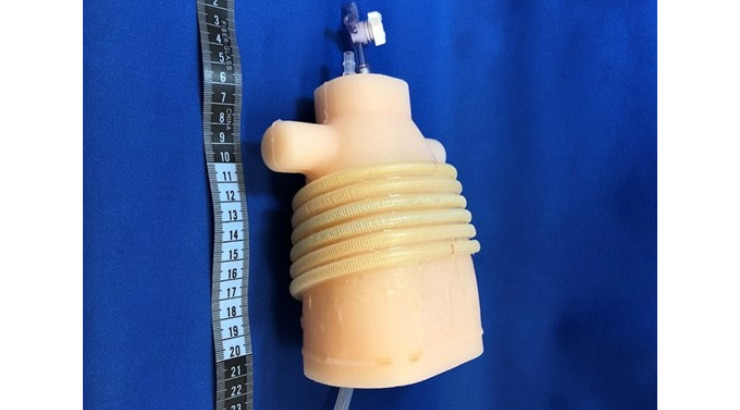Torso Assist Ventilation (TAV) Device for Preterm Newborns, Children, and Adults
ID# 2016-4502
Technology Summary
This technology, referred to as Torso Assist Ventilation (TAV), comprises an assembly of reinforced silicone tubes that encircle and adhere to a patient’s chest and abdomen. When pneumatically activated, the TAV device provides an expansion force that distends the torso. This generates negative pressure in the chest and abdomen which expands the lungs and prevents the chest wall from buckling inwards, counteracting the respiratory insufficiencies common in premature infants, children, and adults. The TAV device can be operated in various modes, including static (i.e., maintain constant negative distending pressure), synchronized (i.e., with spontaneous or mechanically induced breaths to support ventilation) or oscillation (i.e., to clear secretions or facilitate gas mixing). Early swine studies indicate that static distention of the torso improves oxygenation and synchronized support of spontaneous and mechanical ventilation increases tidal volume significantly.
Application & Market Utility
Pulmonary insufficiency is common in preterm infants, children, and adults. Noninvasive treatment in the form of positive distending pressure has significant limitations. Our novel TAV technology is a safe alternative to invasive procedures, providing noninvasive negative distending pressure that can be used alone or synergistically with CPAP to prevent the need for mechanical ventilation (though it can also be used with mechanical ventilation to support weaning). The TAV device may require less nursing vigilance and attention than CPAP. TAV has particular relevance to preterm newborns as it offers an improved method for chest wall stabilization, distention, and ventilation support. However, it could also be used in an adult patient population as an alternative or supplement to CPAP.
Next Steps
Seeking research collaboration and licensing opportunities.

